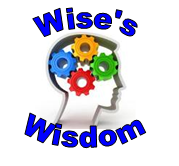My selection this week is yet another take on the characteristics that effective educators in the 21st century need to possess if they're going to be most effective and stay current with the ever-changing landscape that defines the classroom and students of 2013 and beyond.
Here's what eSchool News Readers identified as the top five characteristics:
- 1. Anticipate the future.
- 2. Be a lifelong learner.
- 3. Foster peer relationships.
- 4. Teach and assess all levels of learners.
- 5. Discern effective vs.non-effective technology.
"One of the most common responses from readers was that 21st-century educators must be lifelong learners … and should be willing to learn not only from their peers, but from their students as well."
The Essence of Leadership in Five Letters
Dan Rockwell, a.k.a. the Leadership Freak, discusses and publishes a particular aspect or approach to leadership on a daily basis. In this recent blog post Dan highlights the works of Ken Blanchard and Mark Miller, two highly regarded leaders in their fields, and their "secret" to leadership. This "secret" can be summed up with one 5 letter word, SERVE. As I read the meaning behind each of these letters, I couldn't help but find similarities to the spirit of their meanings and how they relate to hear of our core values in the Hilliard City Schools. These 5 characteristics are as follows:
- S = See the future
- E = Engage and develop others
- R = Reinvent continuously
- V = Value results and relationships
- E = Embody values
The New Ed-Tech Leader Models by Digital Example
"Modeling is crucial. If you want your kids and teachers to be users of 21st-century tools, … you have to show that you can do it too," he says. "It shows that I'm still a teacher—I can still instruct and still learn." This quote embodies the essence of my selection this week. The impact technology makes the day to day instruction and operations of our schools today is enormous. As educational leaders, it is essential that we take the risks to utilize these new technologies to enhance student achievement, and, as the quote above illustrates, we must effectively model how our teachers and students should be utilizing the tools at their disposal.
The New Ed-Tech Leader Models by Digital Example
Eight Things Skilled Teachers Think, Say, and Do
Larry Ferlazzo focuses on the fact that working alongside students, knowing their interests and goals, and developing trusting relationships that help students to connect their learning to their goals are paramount to working successfully with challenging students. In fact, he says there are eight things that truly skilled teachers think, say, and do (hence, the title of the article):
-
1. Remember that authoritative beats authoritarian. Authoritative wins (and this is a great
one for professional self-reflection).
-
2. Believe that everyone can grow. Think Carol Dweck and mindset.
-
3. Understand that power isn’t a finite pie. Shared leadership isn’t a sign of weakness.
-
4. Give positive messages. Ferlazzo targets three practices – the use of positive framing (if
you do this, these good things will happen), saying yes (emphasizing what you DO want people to do), and saying “please” and “thank you.” It’s our opportunity to help students feel valued.
-
5. Apologize. W e’ re human. W e must seize every opportunity to “humanize” our
profession.
-
6. Be flexible. Ferlazza suggests that this may be the most important thing we can do to help
those who challenge us. He points out three ways that flexibility aids teachers in
differentiating instruction and managing the classroom.
-
7. Set the right climate. Extrinsic rewards don’t produce true motivation.
-
8. Teach life lessons. Consider “front-loading” the year with lessons focused on life skills, and
refer back to them throughout the year in order to create a growth mindset.
Eight Things Skilled Teachers Think, Say, and Do
Those People
This is a dead ringer for a powerful read to share with your staff(s). If you haven't noticed by now I am a fan of Seth Godin and his thoughts on many topics, this one in particular. How often have you heard one of your staff members or even yourself at times use the phrase "Those students". You know the students we are referring to. The same students that "all the other" students thought were going to be using the ILC as their new location. The students that are predestined for mediocrity. Their family expects it, their teachers expect it, so they expect it. Seth G. asks a simple question "What if we expect more?". What if as a district we viewed 'those students" with the same expectations of succeeding at their highest level, just like Johnny straight A's ? What if we were a district of inspiring staff members that rallied around the common theme of every student can, and will succeed. Success can be defined individually, nonetheless it's the goal. I know all of you feel this way already, just thought you would like to see it in print from a guy that can write, Seth Godin. Have a great week.
Those People







